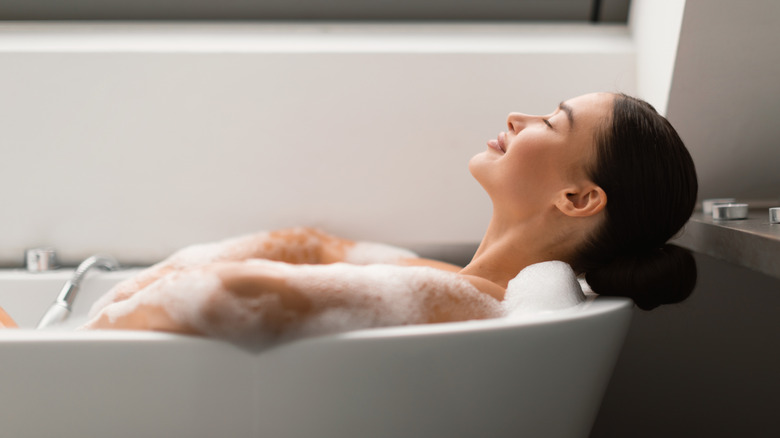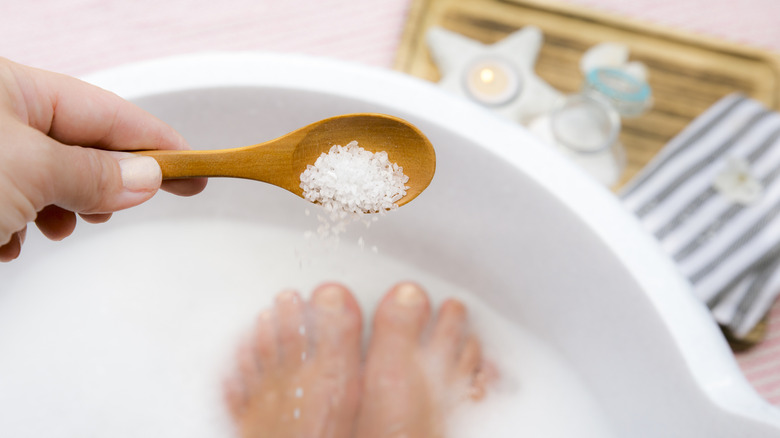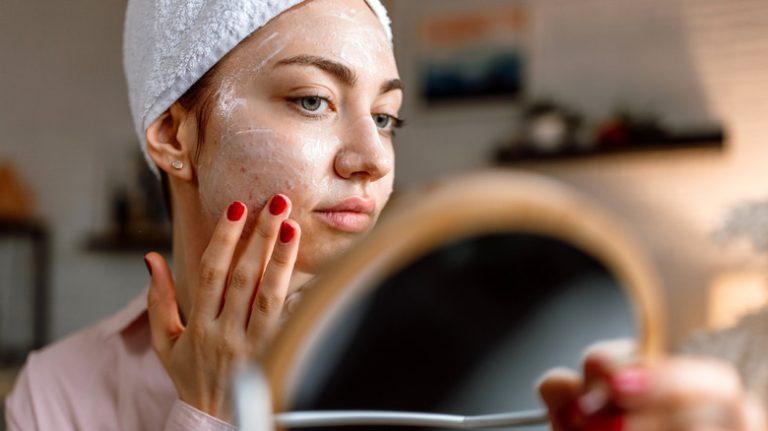
Taking a hot bath can feel like it melts away your stress, especially with your favorite essential oils diffusing in the background. After a challenging workout when your muscles are stiff and sore, adding a handful of Epsom salts can seem like the perfect remedy.
Despite their name, Epsom salts aren’t actually salt; they dissolve in bathwater like salt but are made with magnesium sulfate. Your body relies on magnesium for numerous essential functions, such as aiding muscle contractions, transmitting nerve signals, and promoting relaxation. Since many individuals lack sufficient magnesium in their diet, some believe that soaking in Epsom salts (or other magnesium solutions) can elevate magnesium levels. Given that magnesium is also associated with improved sleep and relaxation, it seems logical to soak in Epsom salts at the end of the day.
While a magnesium bath might feel wonderful, it’s not really the magnesium that’s responsible for the benefits. A 2017 review in Nutrients concluded that your skin can’t absorb much magnesium from a bath, whether it’s Epsom salts or magnesium chloride flakes. Some magnesium might penetrate through your hair follicles or sweat glands, but not enough to significantly increase your body’s magnesium levels. Nonetheless, magnesium baths can be beneficial for your skin.
Magnesium might help heal dry, irritated skin

Older research from the Archives of Dermatological Research examined how various magnesium salts affected the skin of hairless mice. Most magnesium salts promoted healing after skin damage, except for magnesium bis(dihydrogen phosphate). Magnesium baths may also contain calcium, but those with higher magnesium content healed the skin more rapidly. However, a bath soak with an equal mix of magnesium chloride and calcium chloride is more effective than magnesium chloride alone. Epsom salts can also make an excellent foot bath.
While your standard bag of Epsom salts won’t contain minerals from the Dead Sea, utilizing Dead Sea salts rich in magnesium might offer even more skin-soothing advantages. A 2005 study in the International Journal of Dermatology involved individuals with dry, irritated skin soaking one forearm in a 5% Dead Sea salt solution and the other in regular tap water for 15 minutes over six weeks. The skin treated with Dead Sea salts was better hydrated, smoother, and less red. Researchers attributed the high magnesium content to the skin’s improved moisture retention and repair.
Relief from Epsom salts may be about the water temperature

Although soaking in Epsom salts or magnesium chloride may not alleviate magnesium deficiency, small studies have noted that Epsom salts may relieve pain. However, this effect might be less about the Epsom salts and more about the water temperature. A 2023 study in the International Journal of Health Sciences and Research evaluated Epsom salts with hot and room-temperature water in 60 individuals with arthritis. Instead of full baths, participants applied an Epsom salt solution as a compress over their sore joints for 20 minutes twice daily for 10 days. Those using hot water compresses reported less pain and better joint movement than those using room-temperature compresses.
A magnesium or Epsom salt bath can certainly feel soothing, but it may not provide the dramatic results some marketing claims suggest. That said, soaking in magnesium salts is generally safe as long as you don’t have any open wounds or skin infections. Just avoid ingesting magnesium sulfate unless you’re prepared to spend some time in the bathroom, as Epsom salts have a potent laxative effect.
If you’re aiming to boost your magnesium levels, your best strategy is through foods such as nuts, legumes, whole grains, and soy products. Supplements are another option, but the National Institutes of Health advises limiting magnesium from supplements to no more than 350 milligrams per day.




